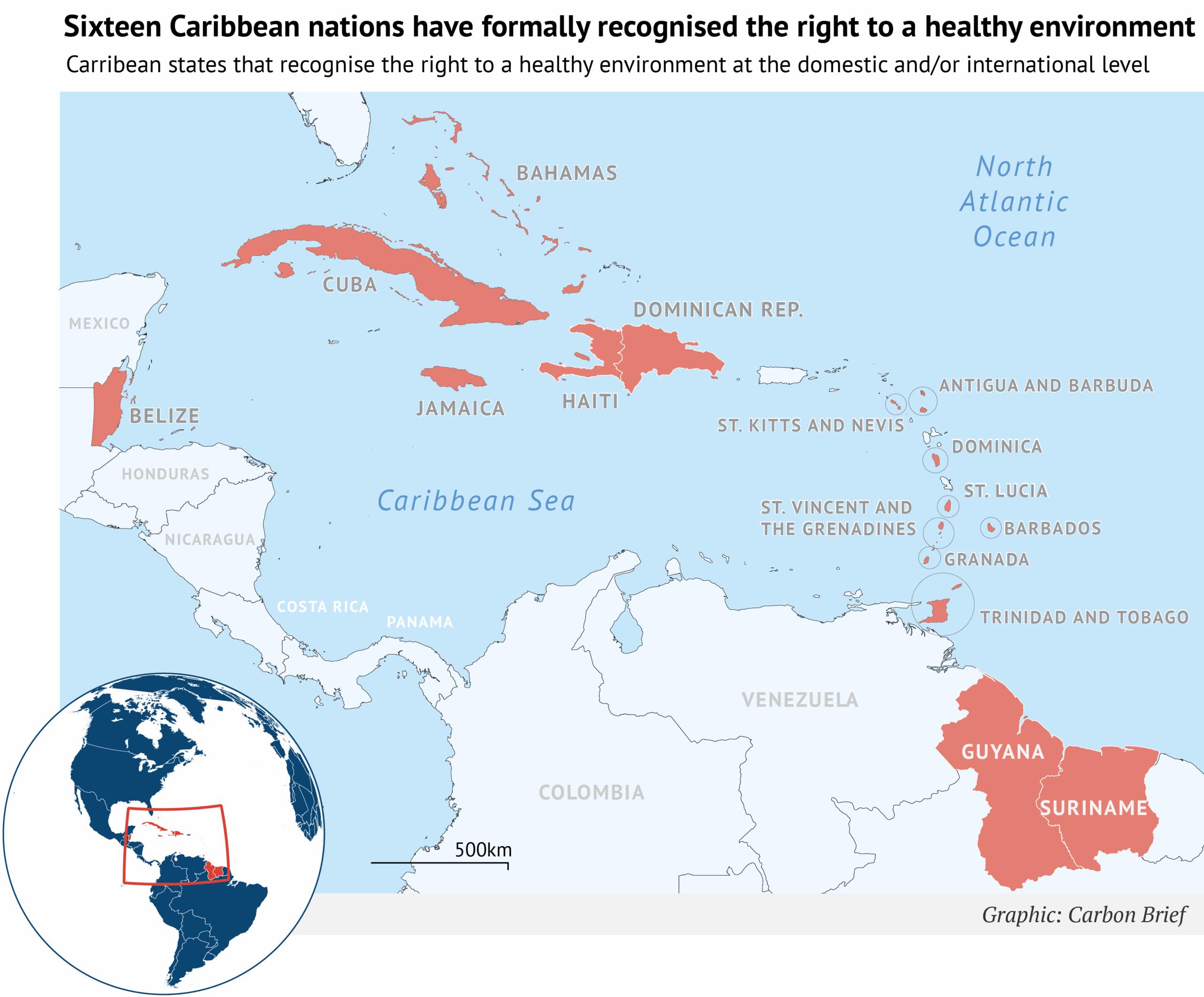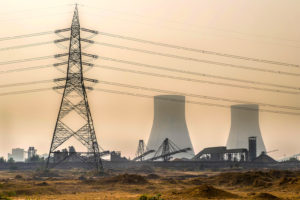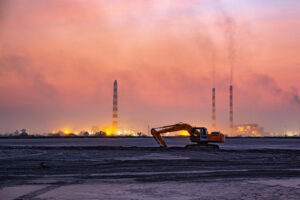China’s climate ambition at this year’s “two sessions” (两会), which ended on 11 March, was relatively subdued, with analysts expecting economic concerns to trump climate action in the year ahead.
The “two sessions”, which takes place every spring, is a major political event held in Beijing that gives an indication of China’s broad policy direction for the year.
It covers every area of governance, including energy and climate policy.
In this article, Carbon Brief outlines key signals from the 2025 “two sessions”, including: a new energy target for 2025; clean-energy and climate priorities; the ongoing development of coal in a “supporting role”; and China’s response to “green trade barriers”.
This is an update of Carbon Brief’s 6 March China Briefing newsletter, expanded to cover developments during the last few days of the event.
A key meeting
The “two sessions” (两会) is the annual gathering of the National People’s Congress (NPC) and the Chinese People’s Political Consultative Conference (CPPCC). This year, it ran from 4 to 11 March.
The gathering is attended by Chinese Communist party members, as well as members of other political parties, academics, industry leaders and other prominent figures, known as delegates or deputies.
Its centrepiece is the “government work report”, a speech delivered by the premier – the head of China’s State Council, the top body of the country’s central government. This outlines the previous year’s achievements and priorities for the year ahead, including the annual GDP target.
At the meeting, China also releases a report by the National Development and Reform Commission (NDRC), the country’s top economic planning body, as well as a central and local government budget report.
In addition, the event allows thousands of delegates to meet and raise policy proposals with senior government officials.
Low energy target
China pledged to reduce energy intensity – a measure of energy consumption per unit of GDP – by 3% in 2025, the work report said. (This measure now excludes renewables and nuclear, meaning it only applies to fossil fuels.)
This target means China is “on track to miss its 14th five-year plan energy intensity target”, Yao Zhe, global policy advisor at Greenpeace East Asia, tells Carbon Brief.
She adds that it was an “inconvenient truth” that China’s economy has not become much more energy efficient in recent years, “offset[ting]…the decarbonisation effects of renewable technology deployment”.
China is lagging behind on its 2026 targets for reducing both energy intensity and carbon intensity – the amount of CO2 emissions per unit of GDP. Analysis for Carbon Brief has shown that they would need to fall by 6% and 7% per year, respectively, to meet the targets.
In its report, the NDRC attributed the shortfall in China’s 2024 carbon-intensity reduction figures to “rapid growth in the energy consumption in industries and the civilian sector as a result of post-Covid economic recovery and frequent extreme weather events”.
Lauri Myllyvirta, lead analyst at the Centre for Research on Energy and Clean Air (CREA), wrote on Bluesky that the low target “shows the government is not prioritising controlling carbon dioxide (CO2) at the moment”.
He also said the new methodology for calculating energy intensity would, in theory, allow fossil-fuel demand to grow by 1.9% in 2025, pushing CO2 emissions up by more than 2%. (He added that he did not think this would actually happen.)
The 14th five-year plan’s carbon-intensity target, which measures CO2 emissions per unit of GDP, will likely also be missed, according to the Carbon Brief analysis. China does not typically announce annual carbon-intensity targets in the government work report.
The targets that were announced underscored that “economic growth remains the top priority, with environmental goals taking a backseat”, Li Shuo, director of the China climate hub and senior fellow at the Asia Society Policy Institute (ASPI), tells Carbon Brief.
The lack of an annual carbon-intensity target was “a further sign of carbon reduction being downplayed”, he adds.
Priorities in 2025
China’s climate and energy policy in 2025 will likely follow well-established priorities, such as balancing decarbonisation and energy security, based on the report’s language.
The state-run newspaper China Daily highlighted the report’s support of China’s “dual-carbon” goals on its frontpage, saying that China pledged to “diligently work” towards them.
According to the work report, China “will develop a package of major projects for climate change response and actively engage in and steer global environmental and climate governance”.
A number of climate measures were announced, but Li tells Carbon Brief that there were “no major surprises”, confirming his view that the “two sessions” has “increasingly become a platform to confirm pre-existing decisions rather than introduce new ones”.
Each year, the government work report lists a number of top priorities for the year ahead, as shown in the figure below.
For 2025, the report lowers the importance of high-quality development in favour of “expanding domestic demand”. The prioritisation of “low-carbon development” and other climate related tasks remained the same compared to 2024.

Ranking of key tasks in each government work report during the 14th five-year plan period (2021-2025). Source: Xinhua publications of the government work reports for 2025, 2024, 2023, 2022 and 2021.
The report discusses China’s climate and environment efforts for 2025 under the title:
“Making coordinated efforts to cut carbon emissions, reduce pollution, pursue green development, and boost economic growth and accelerat[e] the green transition in all areas of economic and social development.”
This stands in stark contrast to the climate section’s title last year, which only highlighted “enhancing ecological conservation and promoting green and low-carbon development”.
The expanded wording signals a more “comprehensive design at the policy level” to “systematically enhance the integration of different sectors for tackling environmental problems”, Xu Song, a registered environment evaluator in China, wrote on his WeChat account.
The work report lists a number of climate initiatives for the year ahead, including: expanding pilot programmes for local governments to peak carbon emissions; building “zero-carbon industrial parks”; accelerating the shift from “dual-control” of energy to dual-control of carbon emissions; and including more industries in the national carbon market.
Most importantly, renewable energy buildouts will continue, with a particular focus on “new energy bases in desert areas, the Gobi and other arid areas”, as well as offshore wind. The report also recognises the need for China to upgrade its electricity grid to cope with vast renewables additions.
But the report also continues to commit to fossil-fuel infrastructure. It reiterates calls to “better ensure both development and security”, which for the energy sector means that China should pursue a low-carbon transition while ensuring sufficient energy supply by keeping some fossil-fuel capacity.
This year, it says China will launch “low-carbon upgrade trials” for coal-fired power plants, which are seen as necessary for energy security. (Recent analysis found that a “substantial amount” of new coal capacity will soon come online.)
The separate NDRC report also reinforces coal as having a “basic supporting role” , announcing that China will “continue to increase coal production”.
The table below compares the language used in relation to coal in government work reports from 2021-2025.
| 2021 | 2022 | 2023 | 2024 | 2025 |
|---|---|---|---|---|
| While promoting the clean and efficient use of coal, we will make a major push to develop new energy sources, and take active and well-ordered steps to develop nuclear energy on the basis of ensuring its safe use. |
We will work to upgrade coal-fired power plants to conserve resources, reduce carbon emissions, make operations more flexible, and upgrade heating facilities. | We leveraged the role of coal as a major source of energy, increased advanced coal production capacity and stepped up support for power plants and heat-supply enterprises to ensure energy supplies. | We will see that coal and coal-fired power play their crucial role in ensuring energy supply and our energy supply meets the needs of economic and social development. | Low-carbon upgrade trials will be launched in coal-fired power plants. |
A table comparing the language used around coal in government work reports during the 14th five-year plan period (2021-2025). Source: Xinhua publications of the government work reports for 2025, 2024, 2023, 2022 and 2021.
Ilaria Mazzocco, senior fellow with the trustee chair in Chinese business and economics at the Center for Strategic and International Studies (CSIS), tells Carbon Brief that the signal that coal would only have a supporting role in the future energy system was a “good sign”, but that the language underscored that there is “little interest” in phasing out coal “for now”.
The NDRC also pledged to reduce steel output and to encourage oil refiners to produce more petrochemical products instead of fuel.
Consumption and ‘involution’
Boosting domestic consumption is seen as key to achieving China’s 2025 GDP target of 5%. Consequently, it replaces fostering innovation as the top priority for policymakers for the year, as shown in the chart above.
China’s approach to boosting growth includes a number of stimulus measures. The net impact of these measures on China’s emissions, such via the building of energy-intensive infrastructure, is currently unknown, however.
At this year’s meeting, the government stated that domestic consumption will be the “main engine” for economic growth in 2025.
“The big question mark is real estate and construction”, Myllyvirta tells Carbon Brief. Real estate and construction have been the biggest driver of domestic consumption for decades.
However, Myllyvirta adds that the government would likely aim for stable growth in the sector, rather than stimulating it with rapid and energy-intensive growth.
In part, China is putting its hopes – and 300bn yuan ($41bn) – into a consumer trade-in programme, which will likely continue to allow drivers to swap combustion-engine cars for “new-energy” vehicles (NEVs, which refers to electric vehicles and plug-in hybrids).
The report also pledges to incentivise “eco-friendly consumption”.
While technological innovation remains a major priority, clean-energy technologies are not explicitly mentioned in the government work report in this context.
Last year’s government work report emphasised the need to “consolidate and enhance [China’s] leading position” in industries such as NEVs and hydrogen, as well as to “create new ways of storing energy”.
Nevertheless, according to power news outlet BJX News, this is not a signal that clean-energy technologies are out of favour, but rather a sign that they are already widely recognised as an essential part of China’s technology strategy.
Similarly, although hydrogen is not explicitly named as a “future industry” in the government work report, the NDRC confirmed it will receive support from a one trillion yuan ($138bn) fund that will be issued for “frontier fields”.
In its budget report, China’s Ministry of Finance pledges to “steadily promote” China’s climate action, such as by strengthening financial support for R&D for low-carbon technologies, enhancing the development of renewable energy, promoting NEVs and developing green finance standards and institutions.
This year’s government work report also emphasises the need to combat “rat-race competition” – a reference to what is described in China as “involution”. This term refers to the overcrowded markets and price wars plaguing some sectors, including NEVs and solar panels. The report states it will take “comprehensive” steps to address the problem.
The NDRC report notes that the government will take steps to “promote orderly development” of the NEV, lithium-ion battery and solar industries, underscoring government concerns about the sector.
Nevertheless, the government does recognise the importance of clean-energy technologies to economic growth, Mazzocco tells Carbon Brief. She explains:
“Energy is now seen as a tool to ensure the economy can grow rapidly and is meant to support technological transformation…Climate per se is not a goal that the Chinese government wants to prioritise over economic growth and international competition.”
Geopolitics
Trade tensions that underpinned the political atmosphere during last year’s two sessions have been exacerbated by a number of developments since then – particularly around export controls and tariffs.
This is reflected in the work report, which notes that “increasingly complex and severe” geopolitical tensions may “exert a greater impact on China in areas such as trade, science and technology”.
In response, the government will “take active steps to respond to green trade barriers” – pointing to the trade measures above as well as the EU’s carbon border adjustment mechanism (CBAM) – the report says.
However, in a press conference at the event, China’s foreign minister Wang Yi said that he believed China and the EU had the “capacity and wisdom” to resolve disagreements through consultations.
China will also continue to help African nations develop in “green sectors”, Wang said, building on language in the government work report that pledges to continue with “high-quality” projects in Belt and Road Initiative partner countries.
Extreme weather
There was continued recognition of the drag of “natural disasters” on China’s economic growth, with the work report pledging to “better guard against and respond” to floods, droughts, typhoons and other extreme weather events.
The report notes that floods “occurred frequently in some parts of China” last year. This was not explicitly linked to climate change.
However, the NDRC report attributes China’s failure to meet its energy-intensity goal in 2024 to, in part, “frequent extreme weather events”.
A recent Carbon Brief analysis found that, of 114 attribution studies for Chinese extreme weather events, 88 had their “severity or likelihood” increased by climate change.
Around the two sessions
Apart from the ministers and senior officials delivering work reports, side meetings between central leaders and local officials at the “two sessions” also send out political signals.
This year, President Xi Jinping met with a delegation from Jiangsu – an eastern province that is known for its affluent economy, manufacturing, strength in exports and technological innovation.
At the meeting, Xi emphasised the “need to upgrade traditional sectors and foster future sources of innovation”, although he also warned against creating industry “bubbles”, reports the Hong Kong-based South China Morning Post.
He added that policymakers should “actively promote high-end, intelligent and green development of industries”.
Meanwhile, MEE head Huang Runqiu emphasised the importance of low-carbon development, both in a meeting with a delegation from the northern Heilongjiang province and in a “minister’s corridor” press conference.
Delegates raised more than 700 policy proposals on “ecological civilisation” at this year’s meetings, energy news outlet BJX News reports, covering areas including addressing China’s industrial energy transition and developing the carbon market.
Among these, the US-based NPC Observer newsletter says, were two bills proposing the enactment of a “climate change response law” that would develop a legislative scheme for reducing carbon emissions.
Finally, as the meetings came to a close, NPC head Zhao Leji confirmed that the legislative body will continue to work on China’s environment and ecology code, according to news reports, as well as the atomic energy law in the year ahead.
The post Explainer: What does China’s ‘two sessions’ mean for climate policy in 2025? appeared first on Carbon Brief.
Explainer: What does China’s ‘two sessions’ mean for climate policy in 2025?
Greenhouse Gases
DeBriefed 10 October 2025: Renewables power past coal; Legacy of UK’s Climate Change Act; Fukushima’s solar future
Welcome to Carbon Brief’s DeBriefed.
An essential guide to the week’s key developments relating to climate change.
This week
Renewables overtake coal
‘HISTORIC FIRST’: Renewables have overtaken coal to become the world’s leading source of electricity for the first six months of this year in a “historic first”, BBC News said. The analysis, from the thinktank Ember, found the world generated “almost a third” more solar power in the first half of the year, compared with the same period in 2024, while wind power grew by “just over 7%,” reported the Guardian.
HEAVY LIFTING: According to the report, China and India were “largely responsible for the surge in renewables”, while the US and Europe “relied more heavily on fossil fuels,” the Guardian wrote. China built more renewables than every other country combined in the first half of this year, the newspaper added.
CONTINENTAL SHIFTS: A second report from the International Energy Agency (IEA) predicted a “surge” in global wind and solar capacity by 2030, but shaved 5% off its previous forecast, the Financial Times said. The IEA revealed that India is set to become the second-largest growth market for renewables after China, “with capacity expected to increase 2.5 times by 2030”, Down to Earth reported. The IEA also upped its forecast for renewables in the Middle East and north Africa by 23%, “helped by Saudi Arabia rolling out wind turbines and solar panels”, but halved the outlook for the US, the FT noted.
Around the world
- EV BOOM: Sales of electric and hybrid cars made up “more than half” of all new car registrations in the UK last month, a new record, according to data from the Society of Motor Manufacturers, reported BBC News.
- BANKING COLLAPSE: A global banking alliance launched by the UN to get banks to slash the carbon footprint of their loans and investments and help drive the transition to a net-zero economy by 2050 has collapsed after four years, Agence France-Press reported.
- CUTS, CUTS, CUTS: The Trump administration plans to cut nearly $24bn in funding for more than 600 climate projects across the US, according to documents reviewed by the Wall Street Journal.
- PEOPLE POWER: A farmer, a prison guard and a teacher were among those from the Dutch-Caribbean island Bonaire who appeared at the Hague on Tuesday to “accuse the Netherlands of not doing enough to protect them from the effects of climate change”, Politico reported.
400,000
The number of annual service days logged by the US National Guard responding to hurricanes, wildfires and other natural disasters over the past decade, according to a Pentagon report to Congress, Inside Climate News reported.
Latest climate research
- Politicians in the UK “overwhelmingly overestimate the time period humanity has left to bend the temperature curve”, according to a survey of 100 MPs | Nature Communications Earth and Environment
- Fire-driven degradation of the Amazon last year released nearly 800m tonnes of CO2 equivalent, surpassing emissions from deforestation and marking the “worst Amazon forest disturbance in over two decades” | Biogeosciences
- Some 43% of the 200 most damaging wildfires recorded over 1980-2023 occurred in the last decade | Science
(For more, see Carbon Brief’s in-depth daily summaries of the top climate news stories on Monday, Tuesday, Wednesday, Thursday and Friday.)
Captured

The UK’s Climate Change Act, landmark legislation that guides the nation’s response to climate change, is increasingly coming under attack from anti-net-zero right-leaning politicians. In a factcheck published this week, Carbon Brief explained how the UK’s Climate Change Act was among the first comprehensive national climate laws in the world and the first to include legally binding emissions targets. In total, 69 countries have now passed “framework” climate laws similar to the UK’s Climate Change Act, with laws in New Zealand, Canada and Nigeria among those explicitly based on the UK model. This is up from just four when the act was legislated in 2008. Of these, 14 are explicitly titled the “Climate Change Act”.
Spotlight
Fukushima’s solar future
This week, Carbon Brief examines how Fukushima helped to recover from nuclear disaster by building solar farms on contaminated farmland.
On 11 March 2011, an earthquake off the pacific coast of Japan caused 15m-tall waves to crash into the eastern region of Tōhoku, killing 19,500 people and injuring a further 6,000.
In the aftermath, flooding at the Fukushima Daichi nuclear power plant caused cooling systems to fail, leaching radioactive contaminants into the soil and leading to a major nuclear incident.
Some 1,200km2 around the site was restricted and up to 100,000 people were evacuated – in some cases forever.
In the years following, Japan entered a fraught debate about nuclear energy.
In 2010, nuclear power provided 25% of Japan’s electricity, but, in the years following the disaster, its 54 nuclear reactors were taken offline.
Successive governments have fought over reintroducing nuclear power. Today, some 14 reactors are back online, 27 have been permanently closed and another 19 remain suspended. (Japan’s newly-elected prime minister Sanae Takaichi has promised to make nuclear central to her energy strategy.)
Against this backdrop, Fukushima – a prefecture home to 1.8 million people – has emerged as a surprise leader in the renewables race.
In 2014, the Fukushima Renewable Energy Institute (FREA) opened with the twin goals of promoting research and development into renewable energy, while “making a contribution to industrial clusters and reconstruction”.
That same year, the prefecture declared a target of 100% renewable power by 2040.
Contaminated land
“A lot of these communities, I know, were looking for ways to revitalise their economy,” said Dr Jennifer Sklarew, assistant professor of energy and sustainability at George Mason University and author of “Building Resilient Energy Systems: Lessons from Japan”.
Once evacuation orders were lifted, however, residents in many parts of Fukushima were faced with a dilemma, explained Skarlew:
“Since that area was largely agricultural, and the agriculture was facing challenges due to stigma, and also due to the soil being removed [as part of the decontamination efforts], they had to find something else.”
One solution came in the form of rent, paid to farmers by companies, to use their land as solar farms.
Michiyo Miyamoto, energy finance specialist at the Institute for Energy Economics and Financial Analysis, told Carbon Brief:
“The [Fukushima] prefecture mapped suitable sites early and conducted systematic consultations with residents and agricultural groups before projects were proposed. This upfront process reduced land-use conflicts, shortened permitting timelines and gave developers clarity.”
As a result, large-scale solar capacity in Fukushima increased to more than 1,300 megawatts (MW) from 2012 to 2023, according to Miyamoto. Moreover, installed renewable capacity now exceeds local demand, meaning the region can run entirely on clean power when conditions are favourable, Miyamoto said.
Today, aerial pictures of Fukushima reveal how solar panels have proliferated on farmland that was contaminated in the nuclear disaster.

Charging on
Last year, 60% of Fukushima’s electricity was met by renewables, up from 22% in 2011. (The country as a whole still lags behind at 27%.)
And that is set to grow after Japan’s largest onshore windfarm started operations earlier this year in Abukuma, Fukushima, with a capacity of 147MW.
The growth of solar and wind means that Fukushima is already “ahead of schedule” for its 2040 target of 100% renewable power, said Miyamoto:
“The result is a credible pathway from recovery to leadership, with policy, infrastructure and targets working in concert.”
Watch, read, listen
OVERSHOOT: The Strategic Climate Risks Initiative, in partnership with Planet B Productions, has released a four-part podcast series exploring what will happen if global warming exceeds 1.5C.
DRONE WARFARE: On Substack, veteran climate campaigner and author Bill McKibben considered the resilience of solar power amid modern warfare.
CLIMATE AND EMPIRE: For Black history month, the Energy Revolution podcast looked at how “race and the legacies of empire continue to impact the energy transition”.
Coming up
- 12 October: presidential elections, Cameroon
- 13-14 October: Pre-COP, Brasilia, Brazil
- 13-18 October: World Bank Group/IMF annual meetings, Washington DC
- 14-17 October: 2nd extraordinary session of the Marine Environment Protection Committee at the International Maritime Organisation, London
- 15-16 October: Circle of Finance Ministers report
Pick of the jobs
- Buckinghamshire Council, principal climate change officer | Salary: £49,354-£51,759. Location: Aylesbury, Buckinghamshire
- Sustainable NI, sustainable business lead | Salary: £60,000. Location: Belfast, Northern Ireland
- Dialogue Earth, South Asia managing editor | Salary: £1,875 per month. Location: South Asia
DeBriefed is edited by Daisy Dunne. Please send any tips or feedback to debriefed@carbonbrief.org.
This is an online version of Carbon Brief’s weekly DeBriefed email newsletter. Subscribe for free here.
The post DeBriefed 10 October 2025: Renewables power past coal; Legacy of UK’s Climate Change Act; Fukushima’s solar future appeared first on Carbon Brief.
Greenhouse Gases
Guest post: How Caribbean states are shifting climate legislation
The Caribbean region is among the most vulnerable to climate change, despite historically contributing less than half of one percent of global greenhouse gas emissions.
Rising sea levels, extreme heat and more frequent and intense storms – such as the 2024 Hurricane Beryl, which made landfall in Grenada – pose urgent and growing threats to the small island states, coastal nations and overseas territories that comprise the Caribbean region.
With global progress to address climate change still too slow, Caribbean countries are taking matters into their own hands by enacting more robust legislation to help protect against climate risks.
In a new study published in the Carbon and Climate Law Review, we identified 78 climate laws and legally binding decrees across 16 Caribbean states, as well as two constitutional references to climate change and a growing recognition of the right to a healthy environment.
Our analysis suggests that, together, these developments are not only enhancing resilience, but also positioning Caribbean states as influential actors in the global climate arena.
Caribbean climate laws on the rise
Climate governance in the Caribbean has expanded significantly in recent years. In the past decade, countries such as Cuba and the Dominican Republic have embedded climate obligations and programmatic guidelines into their national constitutions.
At the same time, legislative recognition of the human right to a healthy environment is gaining momentum across the region. Six Caribbean nations now affirm the right in their constitutions, while 15 have recognised it through international instruments, such as the UN Council, UN Assembly and the Escazu Agreement, as shown in the figure below.

More recently, there has been a notable rise in targeted, sector-specific climate frameworks that go beyond broader environmental statutes.
Saint Lucia stands out as the only country with a climate framework law, or a comprehensive national law that outlines long-term climate strategies across multiple domains. Meanwhile, several other Caribbean governments have adopted climate-specific laws that focus on individual sectors, such as energy, migration and disaster management.
According to our analysis, more than a quarter of climate-relevant legislation in the region – comprising 21 laws and legally binding decrees – now has an explicit focus on climate change, as illustrated in the chart below.
Our research suggests that this represents an ongoing shift in legislative focus, reflecting changes in how climate legislation is being structured in one of the world’s most climate-vulnerable regions.

Caribbean nations are also advancing legal reforms to structure and institutionalise climate finance and market mechanisms directly into domestic law, aligned with Article 6.2 of the Paris Agreement.
For example, the Bahamas has introduced provisions for carbon credit trading, while Antigua and Barbuda, Barbados and Grenada have established national climate financing mechanisms to support mitigation and adaptation efforts.
Some states, including Belize and Saint Kitts and Nevis, have incorporated regional bodies such as the Caribbean Community Climate Change Centre – the climate arm of the intergovernmental Caribbean community organisation CARICOM – into national frameworks. This indicates an increasing alignment between regional cooperation and domestic law.
In addition to the influx of regulations specifically addressing climate change, Caribbean nations are also legislating broader environmental issues, which, in turn, could provide increased resilience from climate impacts and risks, as shown in the graph above.
Key trends in these types of climate-related laws include the expansion of disaster risk management governance, which addresses national preparedness for climate-induced weather events or related catastrophes. Likewise, energy law is an increasingly prominent focus, with countries including Antigua and Barbuda and Saint Vincent and the Grenadines integrating renewable energy and energy efficiency goals into national climate governance.
More broadly, many Caribbean nations have adopted wide-ranging and comprehensive environmental laws, many of which were developed in alignment with existing climate commitments. In combination, these legal developments reflect a dynamic and evolving climate governance landscape across the region.
Proactive vs reactive approaches
Despite general alignment with these broader regional trends, our research reveals distinct developmental pathways shaping domestic climate regulation.
In the eastern Caribbean, for example, we saw both proactive, long-term planning strategies and reactive, post-disaster reforms.
Saint Lucia’s multifaceted approach to climate resilience evolved steadily over the course of more than a decade. During this time, the country developed numerous adaptation plans, strengthened cross-sectoral coordination and engaged in institutional climate reforms in areas such as energy, tourism, finance and development.
More recently, the passage of Saint Lucia’s Climate Change Act in 2024 marked a milestone in climate governance, by giving legal force to the country’s obligations under the UNFCCC, the Kyoto Protocol and the Paris Agreement – making Saint Lucia one of the few small island states to incorporate global climate commitments into domestic law.
Our research indicates that this strategy has not only positioned the country as a more climate-resilient nation, but also solidified its access to international climate financing.
In contrast, Dominica’s efforts evolved more rapidly in the aftermath of Hurricane Maria in 2017, which destroyed over 200% of the country’s GDP. The storm’s impacts were felt across the country and hit particularly hard for the Kalinago people – the Caribbean’s last Indigenous community – highlighting the role of socioeconomic disparities in shaping climate vulnerability and resilience.
In response, the government passed the Climate Resilience Act, creating the temporary Climate Resilience Execution Agency for Dominica (CREAD).
Beyond establishing an exclusively climate-focused institution, the act aimed to embed resilience into governance by mandating the participation of vulnerable communities – including Indigenous peoples, women, older people and people with disabilities – in shaping and monitoring climate resilience projects.

As noted in a recent statement by the UN special rapporteur on Climate Change, Dr Elisa Morgera, these frameworks underscore the government’s ambition to become the world’s first “climate-resilient nation.”
Although challenges persist, Dominica’s efforts demonstrate how post-disaster urgency can drive institutional change, including the integration of rights and resilience into climate governance.
Uneven progress and structural gaps
Despite significant progress, our research shows that several key opportunities for climate governance across the Caribbean continue to exist, which could enable improvements in both resilience and long-term ambition.
The region’s legal landscape remains somewhat heterogeneous. While Saint Lucia has enacted a comprehensive climate framework law, the rest of the region lacks similar blanket legislation. This includes some states that entirely lack climate-specific laws, instead relying on related laws and frameworks to regulate and respond to climate-related risks.
Other nations have yet to adopt explicit disaster-risk management frameworks, leaving Caribbean populations vulnerable before, during and after climate emergencies. Most have yet to enshrine the right to a healthy environment at the national level.
Our research suggests that outdated legal frameworks are further limiting progress in addressing current climate risks. Because many of the longer-standing environmental laws in the region were adopted well before climate policy became a mainstream concern, some fail to address the nature, frequency and intensity of modern climate challenges, such as sea-level rise, tropical storms, wildfires, floods, droughts and other impacts.
More broadly, many Caribbean climate laws include limited integration of gender equity, Indigenous rights and social justice. As Caribbean nations such as Grenada and the Dominican Republic begin to link climate resilience with these issues, the region has an opportunity to lead by example.
Ultimately, capacity and resource constraints persist as significant barriers to implementation and adaptation.
The Caribbean region faces debt that exacerbates ongoing development challenges, a burden made heavier by the repeated economic shocks of climate-related disasters. Along with regional debt-for-resilience schemes, increased funding from high-emitting countries to support adaptation measures in climate-vulnerable nations – as endorsed under the Paris Agreement – is likely to be critical to ensuring the region’s climate laws can be executed effectively.
Global implications of Caribbean climate law
Our research suggests that Caribbean countries are outpacing other regions in terms of the scope and ambition of their climate laws. This legislation has the potential to serve as a model for climate-vulnerable nations worldwide.
Continuing efforts in the region show that legal frameworks in the field can not only drive resilience, embed rights and strengthen claims to international finance, but also highlight how regional cooperation and diplomacy can enhance global influence.
These findings demonstrate that innovation in climate law need not wait for action from major emitters, but can instead be led by those on the front lines of climate change.
The post Guest post: How Caribbean states are shifting climate legislation appeared first on Carbon Brief.
Guest post: How Caribbean states are shifting climate legislation
Greenhouse Gases
IEA: Renewables have cut fossil-fuel imports for more than 100 countries
More than 100 countries have cut their dependence on fossil-fuel imports and saved hundreds of billions of dollars by continuing to invest in renewables, according to the International Energy Agency (IEA).
It says nations such as the UK, Germany and Chile have reduced their need for imported coal and gas by around a third since 2010, mainly by building wind and solar power.
Denmark has cut its reliance on fossil-fuel imports by nearly half over the same period.
Renewable expansion allowed these nations to collectively avoid importing 700m tonnes of coal and 400bn cubic metres of gas in 2023, equivalent to around 10% of global consumption.
In doing so, the fuel-importing countries saved more than $1.3tn between 2010 and 2023 that would otherwise have been spent on fossil fuels from overseas.
Reduced reliance
The IEA’s Renewables 2025 report quantifies the benefits of renewable-energy deployment for electricity systems in fossil fuel-importing nations.
It compares recent trends in renewable expansion to an alternative “low renewable-energy source” scenario, in which this growth did not take place.
In this counterfactual, fuel-importing countries stopped building wind, solar and other non-hydropower renewable-energy projects after 2010.
In reality, the world added around 2,500 gigawatts (GW) of such projects between 2010 and 2023, according to the IEA, more than the combined electricity generating capacity of the EU and US in 2023, from all sources. Roughly 80% of this new renewable capacity was built in nations that rely on coal and gas imports to generate electricity.
The chart below shows how 31 of these countries have substantially cut their dependence on imported fossil fuels over the 13-year period, as a result of expanding their wind, solar and other renewable energy supplies. All of these countries are net importers of coal and gas.

In total, the IEA identified 107 countries that had reduced their dependence on fossil fuel imports for electricity generation, to some extent due to the deployment of renewables other than hydropower.
Of these, 38 had cut their reliance on electricity from imported coal and gas by more than 10 percentage points and eight had seen that share drop by more than 30 percentage points.
Security and resilience
The IEA stresses that renewables “inherently strengthen energy supply security”, because they generate electricity domestically, while also “improving…economic resilience” in fossil-fuel importer countries.
This is particularly true for countries with low or dwindling domestic energy resources.
The agency cites the energy crisis exacerbated by Russia’s invasion of Ukraine, which exposed EU importers to spiralling fossil-fuel prices.
Bulgaria, Romania and Finland – which have historically depended on Russian gas for electricity generation – have all brought their import reliance close to zero in recent years by building renewables.
In the UK, where there has been mounting opposition to renewables from right-wing political parties, the IEA says reliance on electricity generated with imported fossil fuels has dropped from 45% to under 25% in a decade, thanks primarily to the growth of wind and solar power.
Without these technologies, the UK would now be needing to import fossil fuels to supply nearly 60% of its electricity, the IEA says.
Other major economies, notably China and the EU, would also have had to rely on a growing share of coal and gas from overseas, if they had not expanded renewables.
As well as increasing the need for fossil-fuel imports from other countries, switching renewables for fossil fuels would require significantly higher energy usage “due to [fossil fuels’] lower conversion efficiencies”, the IEA notes. Each gigawatt-hour (GWh) of renewable power produced has avoided the need for 2-3GWh of fossil fuels, it explains.
Finally, the IEA points out that spending on renewables rather than imported fossil fuels keeps more investment in domestic economies and supports local jobs.
The post IEA: Renewables have cut fossil-fuel imports for more than 100 countries appeared first on Carbon Brief.
IEA: Renewables have cut fossil-fuel imports for more than 100 countries
-
Climate Change2 years ago
Spanish-language misinformation on renewable energy spreads online, report shows
-
Climate Change2 months ago
Guest post: Why China is still building new coal – and when it might stop
-
Climate Change Videos2 years ago
The toxic gas flares fuelling Nigeria’s climate change – BBC News
-

 Greenhouse Gases1 year ago
Greenhouse Gases1 year ago嘉宾来稿:满足中国增长的用电需求 光伏加储能“比新建煤电更实惠”
-
Greenhouse Gases2 months ago
Guest post: Why China is still building new coal – and when it might stop
-

 Climate Change1 year ago
Climate Change1 year ago嘉宾来稿:满足中国增长的用电需求 光伏加储能“比新建煤电更实惠”
-

 Carbon Footprint2 years ago
Carbon Footprint2 years agoUS SEC’s Climate Disclosure Rules Spur Renewed Interest in Carbon Credits
-
Renewable Energy3 months ago
US Grid Strain, Possible Allete Sale
















